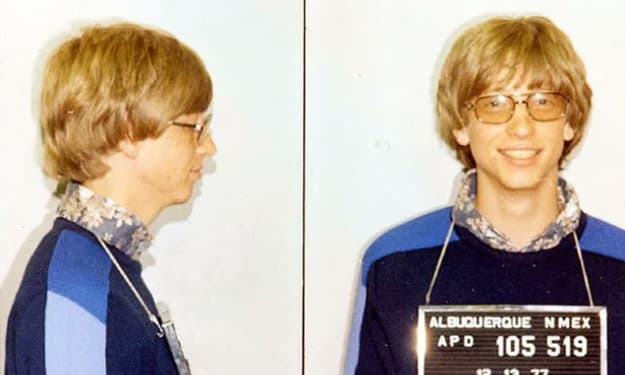The Ukrainian Offensive: Adaptations and Complex Realities 🪖 ⛑️
The ongoing struggles against Ukraine and Russia

The ongoing Ukrainian offensive against Russian invaders has not played out as initially expected by either Ukraine or its Western allies. While it hasn't resulted in a swift and decisive victory, it would be a mistake to label it a failure. In fact, Ukraine has achieved significant victories that are crucial for setting the stage for the continuation of this war. However, it's essential to understand the current state of the offensive and how both Ukraine and Russia have adapted to the evolving conflict. As of the latest developments, Ukraine has made substantial progress in the Zaporozhia region. It successfully broke through the first two, highly fortified Russian lines of defense. Ukraine is now preparing for an assault on the third line of defense. The weakening Russian defenses in deeper territories suggest that a breakthrough may occur sooner rather than later. However, it's crucial to acknowledge that this offensive has not been without its challenges.In contrast to the rapid and successful counter-offensive last fall, the current Ukrainian offensive has been a grinding and costly endeavor for both sides. Notably, it has been confirmed that Russia is sustaining three times as many casualties and vehicle losses as Ukraine, despite being on the defensive. This raises questions about the resilience and capability of the Russian military. Ukraine's strategy diverges from the recommendations of its Western allies. Instead of concentrating its forces on one or two major axes of attack, Ukraine has chosen to maintain pressure across the entire Russian front. The logic behind this approach is apparent – Ukraine realizes it is numerically inferior to the Russian forces. To prevent catastrophic counterattacks by the Russians, Ukraine must sustain pressure along the entire front. The importance of this strategic choice is multifaceted. It denies Russia the opportunity to employ mobile reserves, composed of their best troops, to counter concentrated attacks with the goal of achieving a propaganda victory. By keeping Russian mobile reserves guessing about the location and timing of potential attacks, Ukraine disrupts Russian plans. Throughout the ongoing conflict, both Ukraine and Russia have learned valuable lessons and adapted their strategies and tactics accordingly. These adaptations reflect the ever-evolving nature of modern warfare. Early in the offensive, Russia faced a significant challenge due to the influx of western mine-clearing vehicles equipped with MICLIC mine-clearing explosive charges. Russian minefields were too shallow to counter these new vehicles effectively. In response, Russia expanded the depth of its minefields to over 500 meters to prevent Ukrainian MICLIC vehicles from quickly clearing paths. However, this led to problems related to the quality and quantity of mines available to Russia. Expanding the width of minefields increased the need for more mines, depleting Russian stockpiles. In an effort to counter Western vehicle resilience to landmines, Russia stacked multiple mines or coupled them with improvised explosive devices. Initially, Russia prepared to deliver fixed artillery fire directly onto its own trenches when under attack. This tactic was effective in causing losses among exhausted Ukrainian attackers. However, Russia soon realized that the cost of this approach was too high. Ukrainian tactics evolved to include countering Russian artillery with precision munitions, thanks to an influx of Western counter-battery radars. Russian artillery positions were increasingly vulnerable to Ukrainian counter-battery fire. The situation became so dire that Russian troops publicly complained about it on social media, leading to the dismissal of a Russian general. Russia subsequently abandoned the tactic of shelling its own positions and started using demolition charges to destroy its trenches when under threat. With the ongoing offensive and a dwindling reserve of ammunition, Russia overhauled its artillery doctrine. Traditionally, Russia's artillery doctrine had roots in World War II, with an estimated 720 rounds needed to pin down a platoon-sized force. However, Russia could no longer sustain such an ammunition expenditure. Moreover, its reliance on artillery had led to accelerated wear and tear on gun barrels. This problem was compounded by the use of precision weapons by the Ukrainians. As a result, Russia shifted towards developing laser-guided precision shells instead of traditional dumb shells. This transition has been challenging, as it requires substantial resources, and it remains to be seen whether Russia can maintain the production of expensive precision shells at the required scale. Nevertheless, the balance of artillery advantage between Russia and Ukraine is shifting, with precision artillery rounds offering significant advantages in terms of accuracy and survivability. Both sides have transitioned from large unit actions to smaller company-level actions, mirroring warfare strategies from earlier eras. Ukraine's need to apply pressure across the entire front necessitates smaller unit actions, which are less vulnerable to Russian air power and superior artillery numbers. However, coordinating large unit actions remains a challenge for both sides. Ukraine is grappling with a shortage of support staff for new units. Despite conscripting a large army, it lacks the necessary support infrastructure, such as logistics, intelligence, and training sections for individual units. Ukraine needs Western-trained staff to complement its conscripted formations. NATO's training programs for Ukrainian troops have focused excessively on individual skills, which limits the time available for company-plus training exercises. This approach doesn't adequately prepare Ukrainian units for large-scale actions on the battlefield, both at the soldier and commander levels. A lack of confidence in Ukrainian commanders and the reluctance to use smoke screens for fear of obscuring battlefield visibility have been observed. This issue results from a dearth of large-scale unit training and requires a fundamental retraining of the entire Ukrainian military. Russia has improved its ability to conduct orderly fighting withdrawals, a contrast to the disorganized retreats observed in the past. This strategic adaptation has reduced Russian casualties during defensive operations and made it challenging for Ukraine to capitalize on Russian setbacks. This adaptation is a testament to Russia's ability to evolve when pressured. The ongoing Ukrainian offensive is a complex and evolving conflict that defies easy categorisation. While it has not followed the anticipated script, Ukraine has achieved essential victories that set the stage for the continuation of the war. Simultaneously, Russia has adapted its strategies to cope with the evolving battlefield. Lessons learned from the ongoing conflict highlight the significance of resilience, adaptability, and the role of modern military technology. Western-supplied equipment, such as MICLIC mine-clearing vehicles and precision artillery rounds, has proven its worth, enhancing the survivability of soldiers and efficiency of operations. As the conflict continues, it remains a dynamic and fluid situation, with both sides learning from their experiences. The war underscores the complexities of modern warfare and the challenges of adapting to an ever-changing battlefield.
About the Creator
Rakindu Perera
I’m a highly successful content writer with articles recognised by huge varieties of organisations. Also being in completion of a Bachelors Degree in Mechanical Engineering, I have the upmost know when it comes to exteme applications.






Comments
There are no comments for this story
Be the first to respond and start the conversation.